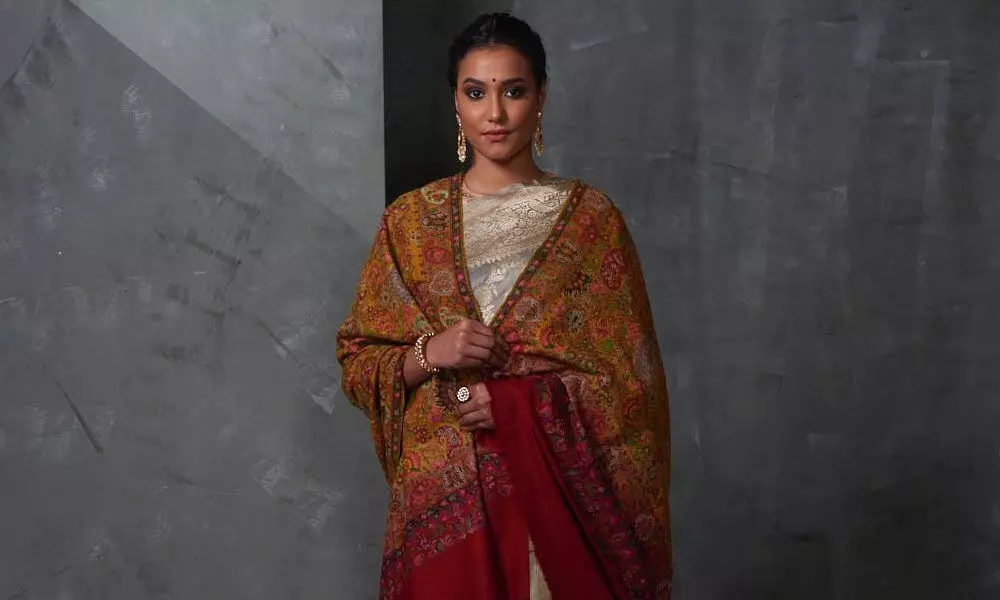Live
- Steps to safeguard natural springs gain momentum
- RWAs want officials to clear fog over SCB-GHMC merger
- Tanks, canals remain neglected despite execution of MGNREGS works
- BRS to celebrate Deeksha Diwas on Nov 29, Dec 9
- NCC Day grandly celebrated at SITAM
- CITU demands rollback of strategic sale of VSP
- 7-Year-old girl sexually assaulted in Tirupati
- PM Modi highlights govt's efforts to make Odisha prosperous and one of the fastest-growing states
- Hezbollah fires 200 rockets at northern, central Israel, injuring eight
- Allu Arjun's Family Appearance on Unstoppable with NBK Breaks Viewership Records
Just In
Pashmina shawls: A pride for many Indians


Pashmina shawls: A pride for many Indians
Pashmina shawls are a source of pride for many Indians, including weavers, because of their opulent elegance, artistic beauty, and great warmth
Pashmina shawls are a source of pride for many Indians, including weavers, because of their opulent elegance, artistic beauty, and great warmth. They are a lavish and vital component of Indian traditional dress, handcrafted with rich embroideries, and with winter approaching, many of us may be considering presenting one to a loved one, or even to ourselves! However, because of its high price, there are many fakes and knockoff Pashmina shawls on the market. It would be simple to be entirely swindled and disappointed if you didn't know how to spot the genuine ones.
Nishant Malhotra, Founder, Weaverstory shares some important tips to keep in mind while buying Pashmina shawls.
100% Cashmere
Pashmina shawls are made of cashmere, the wool of Himalayan goats, and so always make sure to check or inquire about what the shawl is made of. All authentic Pashmina shawls are made of 100 per cent cashmere, and authentic sellers are also aware and particular about the same.
Fibre diameter
Authentic pashmina fabric will have fibres just about 15 -19 microns in diameter, making them thinner than human hair. That low micron count is what makes Pashmina shawls feel light and soft, yet luxurious. So, checking the fibres before buying one is a must.
Uneven weave
Cashmere wool is extremely delicate, because of which it can only be spun by hand. As such, authentic Pashmina shawls will always have irregularities in the weave, making them uneven in places, which won't be there in machine-woven fakes. That painstakingly exquisite handwork is what makes them so expensive as well.
Check for static electricity
By rubbing the fabric with your hands, you'll be able to check if it is made from authentic animal wool fibres or not. Synthetic fabrics create a lot of static electricity when rubbed together, causing the hair on your body to stand on end.
Check the label
As a rule of thumb, all authentic Pashmina shawls will carry a label calling out the make and composition proudly. But real Pashminas will always have the tag stitched onto the hem because it cannot be glued or stuck onto the fabric. Forget spoiling its luxuriousness; glue doesn't hold on to cashmere wool for long. So, if there's one stuck on a shawl, it's a fake.
You can also perform other tests to determine the authenticity of a pashmina shawl, such as a single-thread burn test or pilling inspection. But these are the very essential things to look for when purchasing a Pashmina shawl, so you may be the proud owner of an authentic and elegant Pashmina shawl!

© 2024 Hyderabad Media House Limited/The Hans India. All rights reserved. Powered by hocalwire.com






